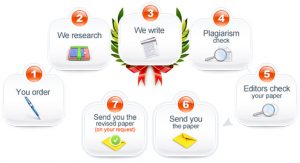Health in the community and planning for disasters
Health in the community and planning for disasters in Washington, Edmonds Paper details Introduction:
Here are some instructions on how to write the story about your field project. It should have the right citations and references in the text. You can add charts, tables, or other things as appendices (labeled with the source identified per APA format).

If you don’t count the reference page(s) and appendices, the document should be between 7 and 10 pages long. Use the headings in the task outline below as the headings for your paper.
Health in the community and planning for disasters Task:
A. Assessment
1. Tell us about the neighborhood where you did your fieldwork. Name each of the following things in your description:
• Location on the map (e.g., county, city, town) The city is Edmonds, in Snohomish County, Washington. • Area size
• Number of people
• The population
• Environment, both physical and social
Health in the community and planning for disasters
2. Make a community genogram or profile that shows how healthy the community is.
Note: This should be added as a separate document.
3. Talk about the health issue you looked into during your fieldwork. Include these things:
• History of Healthy People 2020 (2010) and local public health data that describe this health concern
• Information about the health concern from the national, state, or local level
4. Explain how the health concern you looked into during your fieldwork affects the people you care about. In your description, you should include all of the following:
• Gender
• Age
• Demographics, including income level and level of education
a. Explain how this health concern is related to a health inequity for the population of interest.
b. Use data to support your conclusion.
Health in the community and planning for disasters
5. Talk about the community resources and partners (such as their mission, activities, and websites) that are currently working on the health issue.
B. Diagnosis (The topic for the paper is disaster planning and disaster preparedness)
1. Talk about parts of the health problem that aren’t being fixed despite the partners’ best efforts.
C. Outcomes Identification
1. Describe the final result(s) or improvement goal(s) related to the health concern.
D. Planning
1. Suggest what the nurse should do to help the health concern.
Note: The Minnesota Intervention Wheel can help you choose the main areas where nurses should act.
2. Explain how you and other nurses could work with the community and the population of interest to improve the health concern.
Note: Only choose activities that help with primary and secondary prevention.
3. Talk about possible public-private partnerships that could be made to put your suggestions into action.
4. Talk about the overall goal(s) of doing these activities.
5. Make a schedule for the results you want.
E. Evaluation
1. Tell me how you would decide if the efforts to fix the health problem worked or not.
• Describe the tools you might use to do this kind of evaluation.
F. In the end
1. Think about how your fieldwork has changed your view of the health of the community and the national, state, and local efforts to make people healthier.
Health in the community and planning for disasters
G. Supplemental Materials
1. Add additional information to the end of your paper.
• Citation pages in APA style
• Include your genogram as needed in the appendices.
H. When you use sources, make sure to use APA format for all in-text citations and references.
Note: If the task prompt has bulleted points, the level of detail or support that is asked for in the rubric is based on those bulleted points.
Note: The Rubric Terms link in the Evaluation Procedures section can help you figure out what some of the terms in the rubric mean.
Note: If you use sources to back up ideas and parts of a paper or project, you MUST include APA-style in-text citations and a reference list for any direct quotes or paraphrases. There is no need to list the sources that were used if they were not quoted or paraphrased in the paper or project.
Note: No more than 30% of a submission can be directly quoted or closely paraphrased from other sources, even if they are properly cited. Please look at the APA Handout link in the APA Guidelines section for tips on how to use APA style.


